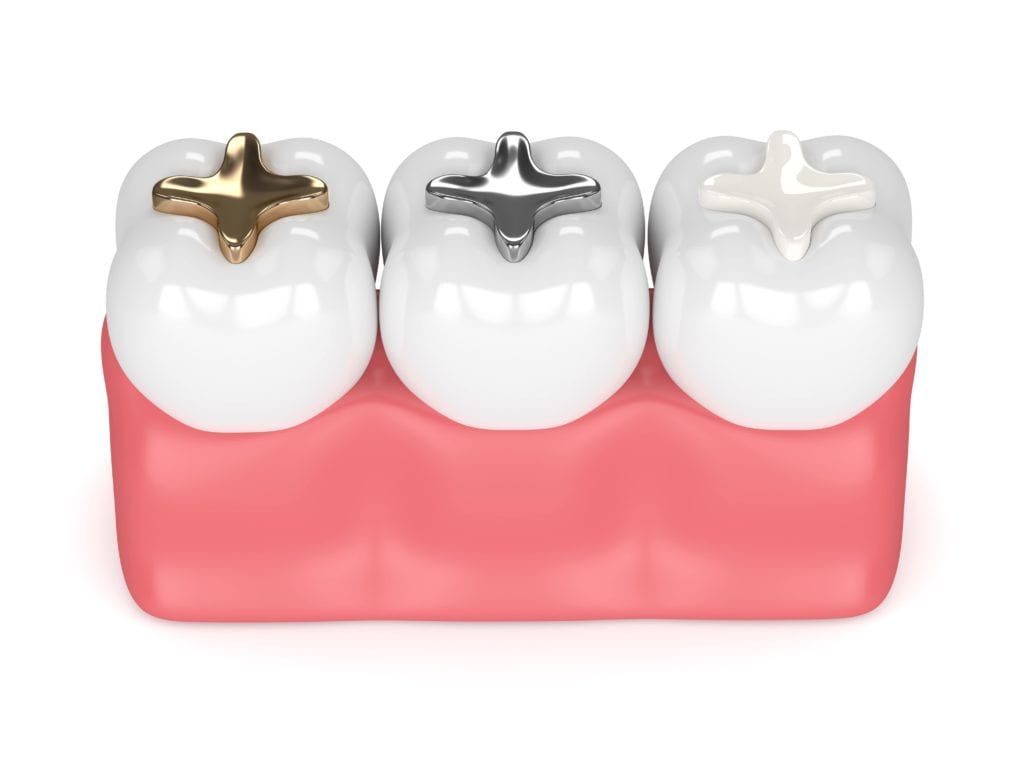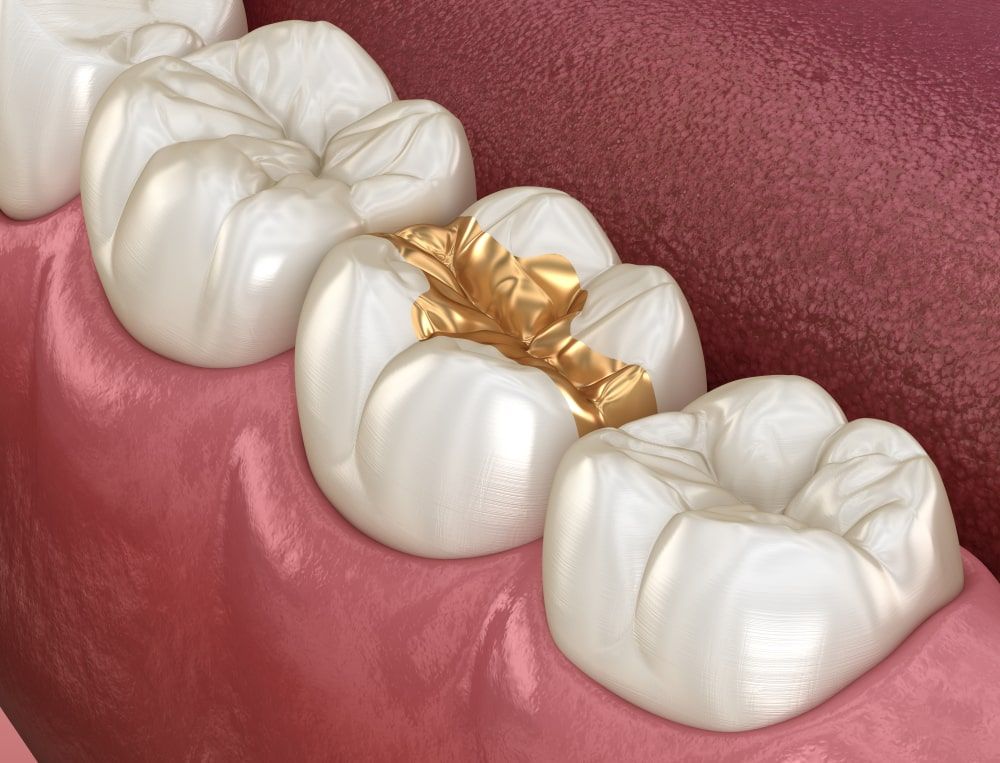How much do you know about dental fillings? Out of all the restorative dental treatments, dental fillings are one of the most commonly performed procedures by dentists. However, just because they are highly popular for dentists doesn’t necessarily mean that patients know what to expect when having a dental filling placed. Therefore, allow us to fill you in about everything related to dental fillings.
What is a dental filling made of?
Dental fillings can be made from a number of dental materials including: gold, amalgam (silver), porcelain, and composite resin. Amalgam and composite fillings tend to be the most popular material to make dental fillings, however gold is considered to be one of the best options for fillings. Porcelain is generally only used for larger fillings that cover the majority of the tooth. These are called inlay or onlays, and they are the only type of filling that needs to be fabricated by a dental lab.

The material your dental filling is made of will ultimately depend upon factors such as: the extent of the damage, location of the affected tooth, presence of metal allergies, and budget. Each dental material has its own pros and cons, therefore considering these factors will help you decide which material is best for you.
How do dental fillings work?
Dental fillings are used to restore decayed teeth by first removing the decayed tissue and then building up the natural tooth structure. Fillings also prevent future decay in that area by sealing the tooth to prevent bacteria from entering it. They earned their name because the filling material fills in cavities left by tooth decay.
How long do dental fillings take?

The time it takes to complete your filling procedure will depend on how many fillings are being placed, their location, the material being used, and the size of the filling. On average, most dental fillings can be completed in an hour or less.
When your dentist places a filling, they will first anesthetize your mouth so that you don’t feel anything during the procedure. If you need multiple fillings, they may schedule multiple appointments so that they don’t have to numb your entire mouth at once.
Once your mouth is numb, they will use a dental drill to remove decayed tissue and reshape the remaining healthy tissue. They will then clean out the cavity before filling it in with the necessary dental material.
How long do dental fillings last?
The lifespan of your filling will depend upon the material used, location in the mouth, and your oral habits. In most cases, metal fillings (gold & amalgam) tend to last longer than composite fillings. To keep your filling in good shape, it is important to brush twice a day and floss once a day. Additionally, you will need to visit your local dental office once every six months for a dental exam and professional teeth cleaning. Finally, to prevent premature wear or damage, you will want to avoid behaviors like grinding or clenching your teeth, chewing on pens or ice, biting your nails, smoking, or using your teeth to open packages.
As you can see, there are a lot of different things to know about dental fillings. Luckily, you are now filled in on dental fillings. This basic knowledge of dental fillings can help you prepare for a restorative dental appointment if your dentist suggests a filling.

Dr. Michael C. Shuck received his Doctor of Dental Surgery (DDS) degree from the Medical College of Virginia, Cum Laude. He takes part in many volunteer outreach events, including Virginia’s Mission of Mercy project, Virginia Special Olympics, Give Kids a Smile, and the Jamaica Project. Dr. Shuck also is a regular volunteer at Williamsburg’s Olde Towne Medical Center. He actively participates with Virginia’s Donated Dental Service. Dr. Shuck has been a practicing dentist in the Williamsburg, Virginia area since 2007.


